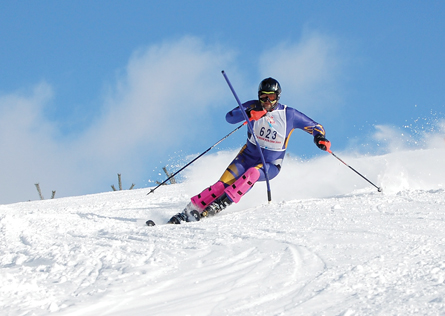Module 6—Work and Energy
Lesson 2—Conservation of Mechanical Energy
 Get Focused
Get Focused

© Merkushev Vasiliy/shutterstock
Lake Louise, Alberta, has become a regular stop on the World Cup Ski Racing circuit. During these races, skiers generally come down the course at speeds ranging from 88–96 km/h, and they try to maintain maximum speed throughout the race. What factors should the skiers consider in trying to achieve very high speeds? At the starting gate, each racer has exactly the same amount of potential energy (assuming they have the same mass).
This means that the race is really about which skiers can convert more gravitational potential energy into kinetic energy as they move down the hill. In the best case scenario, all the potential energy will become kinetic. In reality, this doesn’t happen since considerable friction forces will be acting on the skier. What effect does friction have on the conversion of potential energy into kinetic energy as the skier descends along the course?
In this lesson you will explore the following questions:
- Is mechanical energy conserved in isolated (frictionless) and non-isolated (friction) environments?
- What effect does the presence of friction have when converting potential energy into kinetic energy?
- What effect does work have on mechanical energy?
 Module 6: Lesson 2 Assignment
Module 6: Lesson 2 Assignment
Your teacher-marked Module 6: Lesson 2 Assignment requires you to submit a response to the following:
- Lab—LAB 2, LAB 3, LAB 4, LAB 6, and LAB 7
- Try This—TR 1, TR 2, and TR 3
You must decide what to do with the questions that are not marked by the teacher.
Remember that these questions provide you with the practice and feedback that you need to successfully complete this course. You should respond to all the questions and place those answers in your course folder.